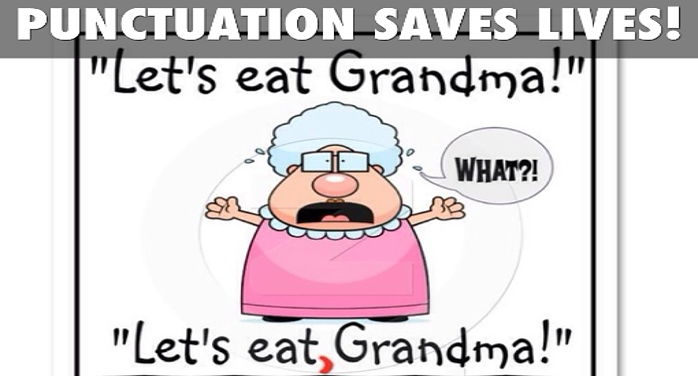Grammar is the Cornerstone of Language.
I’m going to kick things off by addressing why grammar is the cornerstone of language acquisition for ESL learners. Without a solid grasp of grammar, students may struggle to communicate effectively or be misunderstood, which can lead to a lack of confidence. That’s why it’s imperative for you, as an ESL teacher, to have a strong command of essential grammar rules.
You’re going to find out about the common hurdles you might encounter when teaching grammar. It’s not unusual to face a classroom with diverse language backgrounds or students with varying levels of proficiency. Each student might have unique challenges with different grammatical concepts, and your job is to navigate these waters skillfully.
This isn’t just about memorizing rules; it’s also about understanding how these rules apply to real-world communication. Approaching grammar teaching with a student-first mindset means tailoring examples and exercises to be relevant to students’ lives and interests. It’s about fostering an environment where grammar isn’t daunting but rather a tool for unlocking the full potential of the English language.
Choose techniques that resonate with your teaching style and your students’ learning preferences. Introduce grammar in a way that’s engaging and thought-provoking, ensuring that your lessons stick. That’s the strategy I like to leverage to transform grammar from a feared subject into an approachable one.
In the upcoming section, ‘Fundamental Grammar Building Blocks,’ we’re going to cover the indispensable parts of speech, sentence structure, verb tenses, and subject-verb agreement. Just remember, your first attempt at introducing these concepts doesn’t need to be flawless. It’s a learning curve for both you and your students. Let’s prepare to lay down the foundation for building strong grammar skills.
Fundamental Grammar Building Blocks
You’re going to find out about the core elements of English grammar in this section. Think of grammar as the scaffold that supports language construction; without a firm grasp of these basics, students’ language abilities may remain shaky.
Parts of Speech.
I’m going to start by discussing parts of speech because they’re the foundation of every sentence. Nouns, pronouns, adjectives, verbs, adverbs, prepositions, conjunctions, and interjections each play a critical role, and they need to be taught early on in ESL education for optimal understanding.
Sentence Structure.
Next up is sentence structure. Crafting sentences that are both clear and grammatically correct is a cornerstone of language learning. I’ll talk about the importance of subject-predicate construction, the use of objects, and how phrases and clauses fit together to convey precise meanings.
Tense Consistency.
I’ll also dive into tense consistency, teaching you how to guide students in using the past, present, and future tenses effectively. ESL learners often struggle with the concept of time in English, so I recommend adopting a consistent approach, using timelines and real-world examples to elucidate this topic.
Verb Agreement.
Finally, I’ll cover subject-verb agreement, because it’s crucial. Whether a subject is singular or plural, the verb must agree. This isn’t just about memorizing rules; it’s about understanding the logic behind them, which can be a sticking point for many learners. I’m here to help you with strategies and tools to explain this concept with clarity.
Contextual Grammar: Beyond the Basics
Contextual grammar takes the rules and principles of English and applies them to real-life situations. This isn’t just about memorizing rules; it’s also about understanding how language works in various contexts. As an ESL teacher, you’re going to find out about some nuanced aspects of grammar essential for your students to communicate effectively.
First up, modal verbs. These helpers (can, could, may, might, shall, should, will, would, must) are crucial in conveying possibility, ability, permission, and obligation. Your students might struggle with their subtleties, but I’m here to help you guide them through the maze.
Conditionals are your go-to for teaching probability and possibility. They can be tricky because they’re not just about the form—’ if this, then that’—it’s also about the meaning behind each conditional. From zero to third conditionals, it’s vital to show how each one fits into everyday conversation.
Direct and indirect speech is where things can get tangled. You’ll be helping your students learn how to shift from reporting speech (‘She said, “I am tired”‘) to conveying the message without quoting word for word (‘She said she was tired’).
Lastly, let’s talk about relative clauses. These are the bits that connect ideas within a sentence (‘The book that you gave me is on the table’). They’re excellent for adding information without starting a new sentence and they help in keeping stories flowing. But, you’ll need to explain the difference between essential and non-essential clauses to prevent confusion.
So, now you’ve got a handle on these advanced topics, let’s move on to something even more exciting—bringing grammar to life in the ESL classroom. You can always adjust your approach down the road, but with these advanced grammar foundations, your students will be better equipped to express themselves with clarity and confidence.
Click here for over 15,000 downloadable Grammar sheets at “Grammarism”
Grammar and Engagement: Interactive Teaching Techniques
Now, harnessing the power of play in the classroom isn’t just a nice-to-have, it’s a must for helping students internalize grammar rules. That’s where games and collaborative activities step in to transform rote learning into an interactive experience.
Feedback and correction are like the guardrails on the road to language mastery. Done right, they provide direction without discouraging learners. Remember, it’s about building confidence as much as competence.
Grammar teaching isn’t just about the ‘what’; it’s also about the ‘where’ and ‘how’. Folding cultural nuances into your grammar lessons can provide rich, real-world context that gives rules relevance.
Assessment shouldn’t be a source of dread for your students. When you use methods that emphasize understanding over memorization, you promote long-term retention and more meaningful learning. It’s true, that change can be slow, but even small shifts towards engaging, practical assessment can yield big improvements in how students grasp grammar.
 How to Make Grammar Fun.
How to Make Grammar Fun.
Making grammar fun for ESL students can greatly enhance their learning experience and engagement. Here are some ideas to make grammar lessons more enjoyable:
Interactive Games:
Incorporate grammar games into your lessons, such as grammar bingo, board games, or online quizzes. This adds an element of competition and fun while reinforcing grammar rules and concepts.
Use Multimedia:
Utilize videos, songs, and interactive online resources that focus on grammar. Engage students with visually appealing and entertaining content that demonstrates grammar rules in a relatable context.
Hands-on Activities:
Include hands-on activities that promote kinesthetic learning. For example, create grammar flashcards for students to match, or have them physically rearrange sentence cards to practice sentence structure.
Role-plays and Skits:
Incorporate role-plays and skits where students can use grammar rules in context. This enables them to practice grammar more dynamically and creatively, fostering communication skills alongside grammar acquisition.
Storytelling and Creative Writing:
Encourage students to write stories or engage in creative writing exercises where they can showcase their grammar knowledge. This allows them to apply grammar in a creative and personalized manner.
Gamify Learning:
Implement a points or rewards system where students can earn badges or prizes for mastering grammar concepts. This gamification approach adds an element of excitement and motivation to the learning process.
Incorporate Technology:
Integrate educational apps, online grammar games, or interactive websites into your lessons. These tools can make grammar learning more visually appealing and provide instant feedback to students.
Group Projects:
Assign group projects that require students to collaborate and apply grammar rules. For example, create a grammar poster or a grammar-themed skit to encourage teamwork and application of grammar concepts.
Real-life Context:
Teach grammar within real-life contexts and situations that students can relate to. Incorporate examples from everyday conversations, news articles, or popular culture to help students see the relevance of grammar in their daily lives.
Celebrate Progress:
Recognize and celebrate student progress and achievements in learning grammar. Praise their efforts, offer positive reinforcement, and showcase their work to the class or school community.
Click here to find my “Favorite 10 ESL Websites” to help with resources.
Remember, creating a positive and supportive learning environment is crucial when making grammar fun for ESL students. Adapt your teaching methods to cater to different learning styles, provide ample practice opportunities, and foster a sense of enjoyment and curiosity in your students.
Final Thoughts.
I’m here to help you with these strategies, so you can take your teaching to the next level. I hope that you’ll find this advice not just theoretical but actionable in your next lesson.
Have you got other effective grammar-teaching tactics? Share them with us—we’re all on this journey together! And if you’re looking for even more insights, stay tuned for my upcoming articles on teaching English as a Second Language.
Check out my No. 1 ranking Website “VietnamESL”
Steve
Any or all links on this site may be affiliate links, and if you purchase something through those links I will make a small commission on them.
There will be no extra cost to you and at times due to my affiliation, you could actually save money.
You can read our full affiliate disclosure here.





